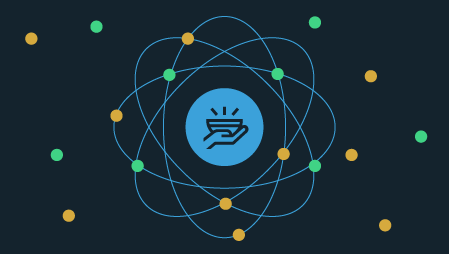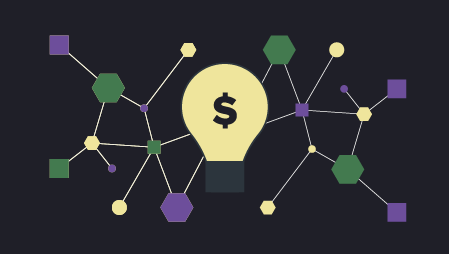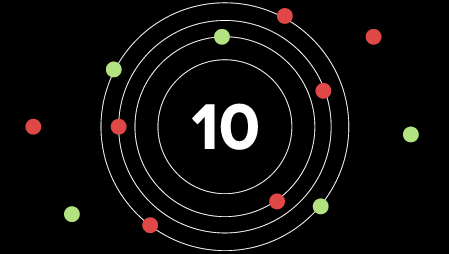Ready to learn more on IoT? Browse courses on IoT and big data courses developed by industry thought leaders and Experfy in Harvard Innovation Lab.
Making The Connection Between IoT And Big Data
In the fast-changing world, it has become difficult to catch up with all the new concepts and technologies. It is even more complicated to distinguish which of them are really useful and which ones are just a hype. In the field of data analytics, it was big data that started this era of doubt. Now, when this concept is clearer, a new wave is coming: Big data for IoT.
The spirited discussions on what is big data and what value it can bring, started to subside. However, businesses haven’t had a chance to sigh with relief, when the experts started to massively use this term together with a new one – the Internet of Things (or IoT for short).
So here we are again, trying to define how exactly IoT is connected to big data.
The touch point between IoT and big data
Simply put, IoT is the network of devices (you may also call them things) connected to the internet. These devices have in-built sensors that can generate data and send it, thus communicating with each other and with the analytical system.
Here are some examples for you to understand this better.
Smart Home
Even if it’s still strange to read about communicating devices, the concept has already found its way into our lives. Imagine a smart home that can regulate temperature by adjusting the operation mode of the heating and the air-conditioning systems, that can turn the lights on and off, that can signal about water or gas leakages or home invasion. But the most important thing here is that your home can do all this without your involvement.
A classic example for IoT in business is machinery monitoring with the use of multiple sensors installed on different machine parts. These sensors send readings about temperature, vibration, pressure, lubrication, etc. to the analytical system. The system then processes them and identifies some hidden patterns and dependencies. If the system recognizes that the readings match some failure pattern, it sends an instant alert to the maintenance team.
Now, let’s answer the burning question of how IoT intersects with big data.
When cleared from all the hype created around it, IoT is just one of many big data sources. In fact, this means that IoT data is one of big data types, which makes big data technology stack an excellent (though not the only) option for handling IoT data at all the stages.
For data ingestion, companies can use Apache Kafka, as this technology supports data streaming. Apache Hadoop ecosystem can be a good choice for data storage and for the processing of historical data, while Apache Spark – a perfect fit for near real-time data processing.
Big data use cases where IoT data rules
We started our article with providing a use case for manufacturers. At the same time, we can meet IoT data in other industries too. Let’s expand our list of examples that show IoT big data use cases.
Healthcare
In healthcare, wearable sensor devices coupled with mobile apps make remote health monitoring possible. The approach works as follows: the sensors monitor the state of a particular patient (heart beat, body temperature, blood pressure, respiration rate, etc.) and communicate this data to the cloud and then to the app in real time.
The analytical system constantly searches for hidden trends in all the patients’ IoT data and tries to find the patterns that are likely to provoke complications. If the analysis of IoT big data reveals that some symptoms are alarming, the system sends an alert to the patient and the physician immediately.
Retail
A well-known retailer Amazon has recently launched a new concept – Amazon Go. This is a store without cashiers, so customers don’t have to queue to pay for their purchases. To enter, one should just scan their smartphones. In fact, here IoT and big data analytics reign: the store is stuffed with sensors and cameras.
Customers move around the store and the cameras are able to distinguish each of them, as well as track all the products they put to their carts or return to the shelves. Weight sensors serve an additional control point: they can recognize that a particular product is not on the shelf anymore.
When customers finish their shopping, all the products they have chosen are in their real and virtual baskets. Once done shopping, the customers can simply leave the store as the system would automatically charge them later.
Undoubtedly, Amazon Go is a visionary concept. However, retail industry shows more ideas that are down-to-earth such as smart logistics that enables tracking and optimizing routes and identifying the behavior patterns of each truck driver. Retailers also use beacons to activate visitors’ apps and push out relevant product offers and promotions once a visitor enters a store and passes by a beacon.
The visitor is happy as they receive personalized offers that originate from their purchasing history and response to previous promotions. At the same time, beacons are helpful for the store employees, as they allow identifying the most valuable customers who require a high-quality service.
Banking
The banking industry also benefits from IoT. Banks are striving to get customer 360-degree view and provide seamless customer experience. While it all started with the active involvement of smartphones, IoT further expanded to wearable devices. For example, Bank of America partnered with FitPay to further promote wearable payments.
Thanks to this collaboration, the bank’s cardholders would be able to pay directly from their smart watches and other wearables. And the bank would be able to identify their customers’ behavior and preferences.
In a nutshell
Despite all the hype around IoT, it is just one of multiple big data sources.
Undoubtedly, it is a valuable one and it is definitely gaining momentum. If you already have some big data solution implemented, maybe you have already been dealing with IoT data even without paying attention to this fancy term. If you are just planning to become big data-driven, we hope that the use cases we described may inspire some great ideas.
Interested in knowing more about IoT, take our expert course here: IoT for Executives




Getting IoT married with Big data would be a relatively huge task and complicated one. Article explains how that can be done in more easy way.